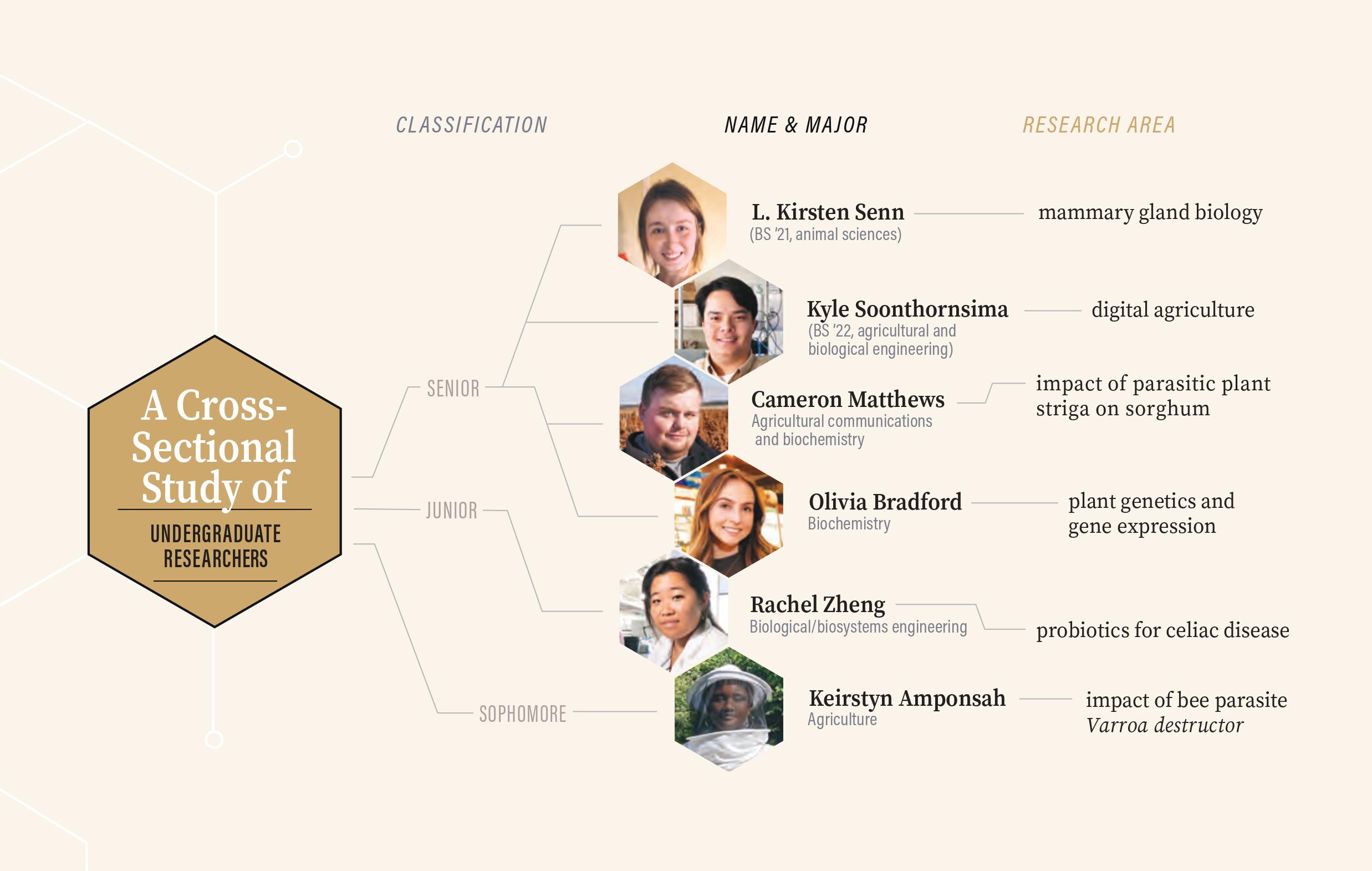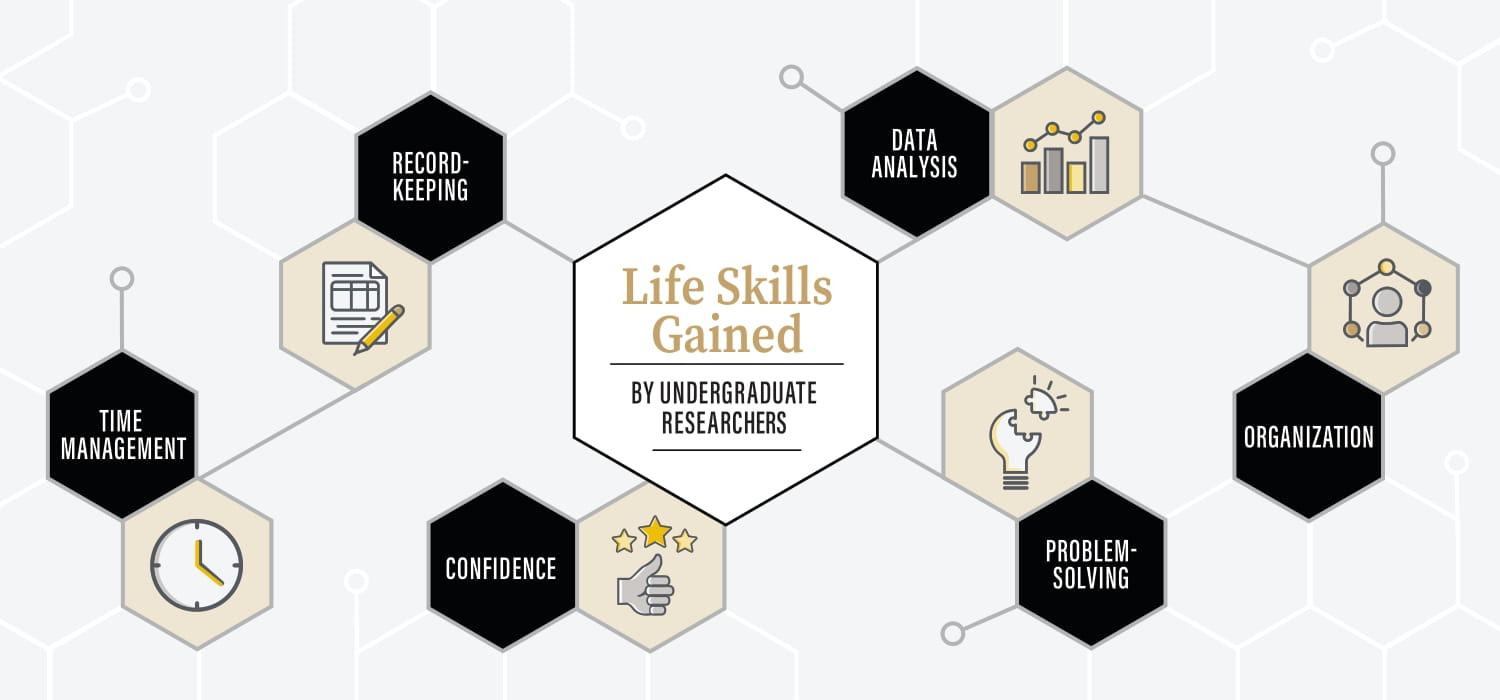UNDERGRADUATE RESEARCH:
A Study of Outcomes
BY EMILY MATCHAR

NOTE:
This is what we would call it
if we submitted it to a
scientific journal.
INTRODUCTION
Purdue’s College of Agriculture encourages students to have at least one “transformational experience” through its CATE (College of Agriculture Transformational Experiences) program. One facet of CATE is pursuing original research as an undergraduate. In this article, we’ll meet six students, learn how they got involved in research, and discover how their experience has shaped them and informed their future plans.
METHODS
Senior Cameron Matthews has been involved in agriculture his whole life. He grew up on a hobby farm in east-central Indiana, and as a teenager began raising show cattle and pigs and growing mums to sell. He planned to major in biochemistry at Purdue, with the intention of specializing in plant breeding in graduate school.
But there was just one problem.
“I’m too social for biochem,” he says, laughing.
Spending all his time in the lab just wasn’t going to work. So he decided to double major, adding agricultural communication to the mix. Wanting hands-on work, he reached out to several professors in the College of Agriculture about research opportunities. Gebisa Ejeta, Distinguished Professor of Agronomy and executive director of the Purdue Center for Global Food Security, responded. Would Matthews be interested in studying striga, a parasitic plant that affects sorghum crops?
He sure would.
Recent graduate L. Kirsten Senn is another small-town Hoosier who grew up on a hobby farm planning to become a vet. She had strong role models: both her parents are large animal vets. At first, doing research was a way of building her resume for vet school. But when she landed in the mammary gland biology lab of former Glenn W. Sample Dean of Agriculture Karen Plaut and began working with cells, it was a love match.
“I really got to dive into cellular biology,” she says. She remembers thinking, “Wow, research is fun; research is cool.”
Junior Rachel Zheng found her love for science early. She grew up near Indianapolis excelling in biology classes. “I knew I wanted to do something with biotechnology since early high school or late middle school,” she says.
She made it her mission to get into a Purdue lab. She created an email template introducing herself to professors, expressing interest in their work and asking if there was a possibility of joining their labs.
Her thorough approach paid off.
Sophomore Keirstyn Amponsah grew up near Washington, D.C. with no agricultural background. As a high schooler during the pandemic, she took a distance beekeeping class, and found herself fascinated.
“I basically tried my hand at it, and I really liked it,” she says. “This helped lead me to Purdue.”
As a freshman, Amponsah joined the Beekeeping Club, where she saw an ad looking for research assistants. That’s how she found herself in the bee lab of Brock Harpur, assistant professor of entomology.
Senior Kyle Soonthornsima is also from a big city — Chicago — by way of Louisiana. He found himself doing research through serendipity. As a freshman in the Exploratory Studies program, he thought he’d do engineering. But a class assignment got him talking to an agricultural systems management (ASM) major.
“He gave me a tour of the ag campus, and his pitch for ASM was it being a very broad major — how agriculture is at the cutting edge of new technology and all new tech being developed finds its way into agriculture,” he says.
Soonthornsima decided to major in ASM as well. He’s currently working on an open-source template to give farmers a simple way of creating digital records.
Olivia Bradford originally planned to be a musician, not a scientist, and began her educational career double majoring in music and biochemistry at Butler University. But as she progressed, the music interest fell away, while the biochemistry passion grew. Eventually she decided she needed opportunities for hands-on research. That’s where Purdue came in.
“I came here last fall and took a tour, and I was just so impressed by the opportunities, especially within the College of Agriculture,” she says.
She transferred the spring of her junior year.
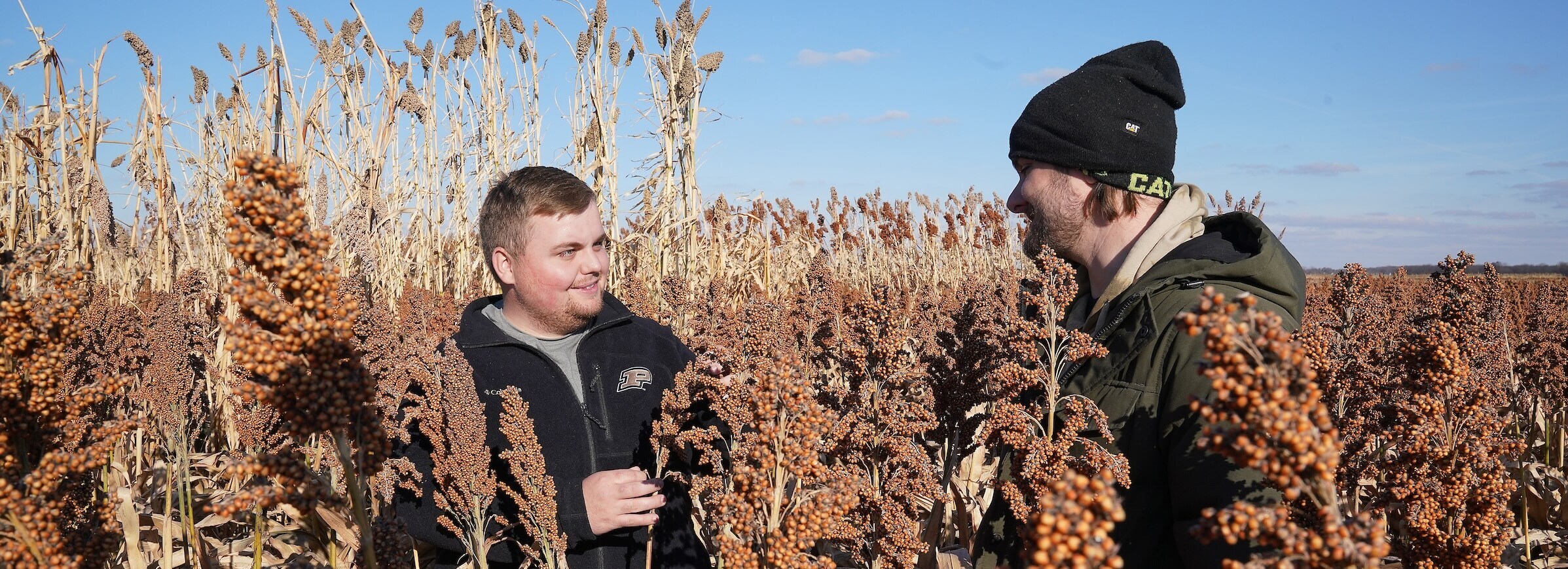
RESULTS
Cameron Matthews likes to compare striga to a leech. It attaches itself to plants like sorghum and siphons off their nutrients.
Ejeta had identified a gene that makes sorghum produce less strigolactone, a chemical compound that causes striga to germinate near another plant’s roots. Less strigolactone means less striga, which means stronger sorghum. Matthews is now working to help characterize a second phase of striga resistance that keeps striga from growing into a full plant.
The project aims to help farmers in Africa, where striga, also known as witchweed, is a scourge.
“A lot of sorghum is grown in Africa because sorghum provides grain to feed [farmers’] families and also grass or biomaterial to feed livestock,” says Matthews, who conducted full-time research during the summer as part of a Summer College of Agriculture Research Fellowship (SCARF) project.

Olivia Bradford is also doing genetic research that could ultimately help farmers. This past summer she did a SCARF project under Joe Ogas, professor of biochemistry and interim department head, on Arabidopsis thaliana, a flowering plant and common research subject. She uses toxins to damage the plant’s DNA to understand how DNA modifications affect the plant’s expression. “I ended up seeing some really funny-looking plants — the impact of what happens when you treat plants with toxins,” she says.
During the summer, Bradford worked 40 hours a week in the lab, which gave her a taste of a full-time scientist’s life.
“It was awesome. It’s just crazy how much you can get done in that amount of time,” she says.
Kyle Soonthornsima is also interested in helping farmers, though in a very different way. He wants to make it easier to keep digital records for tracking and analyzing farming operations. His digital records template is the result of his work in the lab of Dennis Buckmaster, professor of agricultural and biological engineering and Dean’s Fellow for digital agriculture.
“Some operators and farmers don’t have digital records,” Soonthornsima says. “If they’re even keeping records at all, it may just be in booklets or papers, and not the easiest to go back through and review, let alone do analysis on.”
West Lafayette–area farmers are conducting a trial of his template, which is available for free on Purdue's digital agriculture website.
“We’re just in the process of getting criticisms, responses and suggestions for those users we have so far,” he says.
Keirstyn Amponsah’s work focuses on a specific type of agriculture: beekeeping. In Brock Harpur’s lab, she’s working on building a camera system that can peer into hives and spot Varroa destructor, a type of parasitic mite that, as its name suggests, destroys bee colonies.
“The idea is that it gives beekeepers a better angle to look into their hives,” Amponsah explains.
In this case, knowledge is truly power. Once a beekeeper spots mites, they can treat the infestation with anti-mite strips or other methods.
In addition to her mite research, Amponsah gets to hone her own beekeeping skills by helping manage the 200 bee colonies in the Purdue apiary. “We go in once a week or as needed,” she says. “The bees sort of work on their schedule.”
Kirsten Senn was also able to work with animals during her time at Purdue, a perfect fit for the former aspiring vet. She collected swine colostrum (a mammal’s first milk, produced by the mother immediately after birth) for a study on piglet immunity. She then fed piglets from new litters different percentages of colostrum and tracked their growth.
“The purpose was to create a model of how much colostrum these piglets should be getting to establish a strong enough immune base,” she says.
She was also able to work with dairy cattle, something she had plenty of experience with from home. “That was cool to be able to work with animals that I was comfortable with, but work with them in ways I hadn’t before,” she says.
Rachel Zheng’s latest work doesn’t directly focus on farming, although it deals with a protein found in many of our most common grains: gluten. This past summer, as a member of Purdue’s International Genetically Engineered Machine (iGEM) team, Zheng participated in a contest to use synthetic biology — redesigning organisms by engineering them to have new abilities — to develop a solution to a global issue. Zheng’s three-person team attempted to build a probiotic for celiac disease, an immune reaction to eating gluten. They worked long hours to develop a system to detect gluten and release enzymes to digest it.
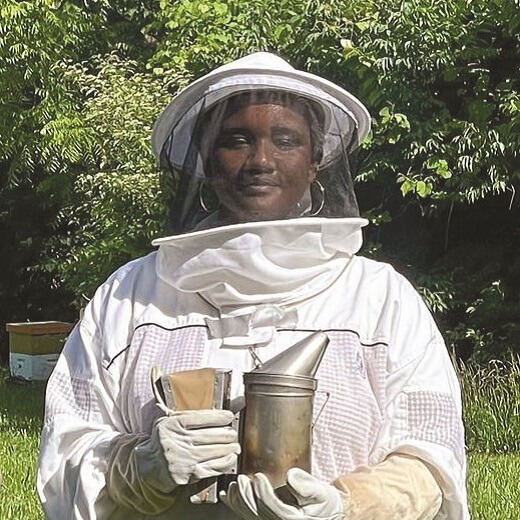
FIGURE 3. Along with her research, Keirstyn Amponsah helps manage the 200 bee colonies at Purdue’s apiary.
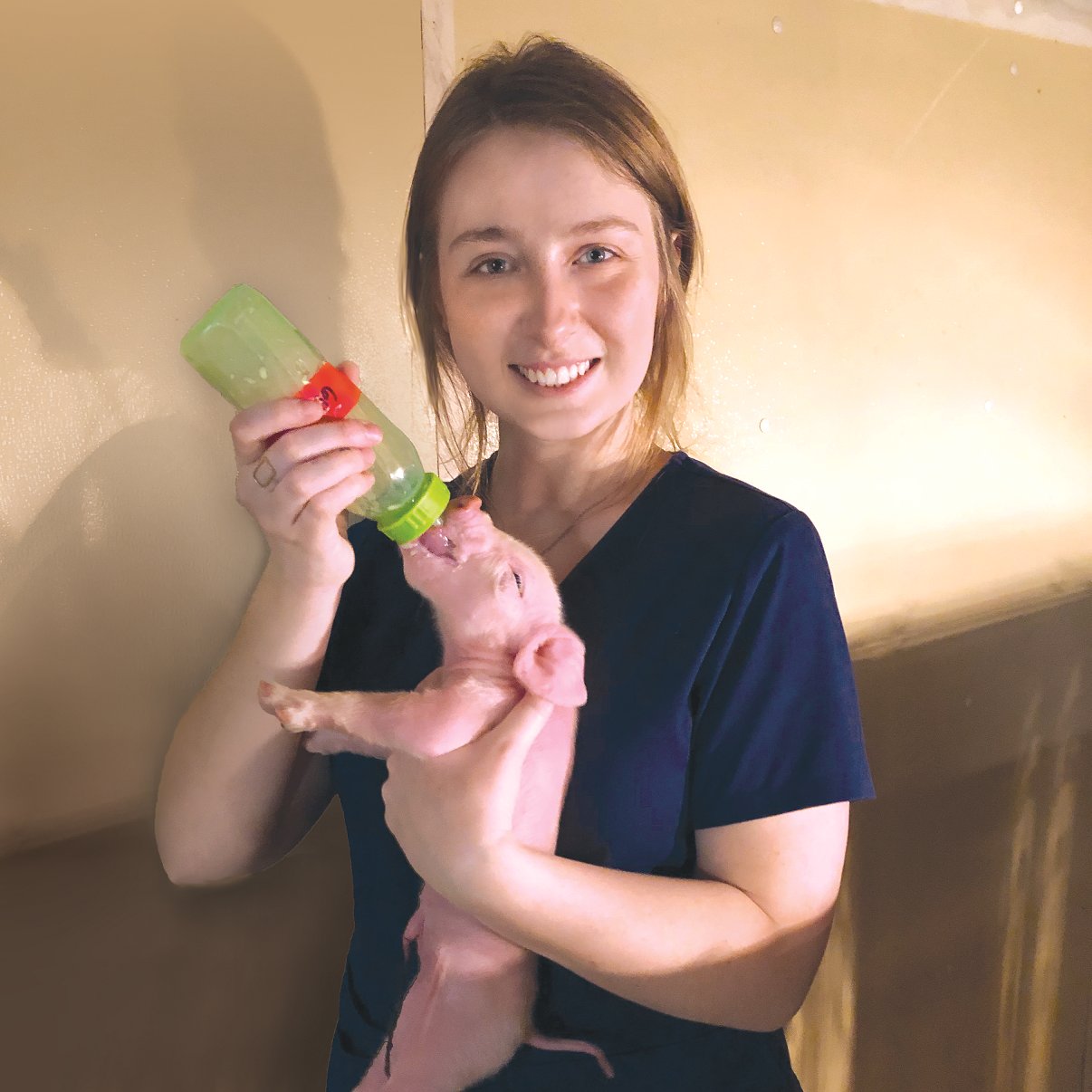
FIGURE 4. Kirsten Senn studied how a swine’s first milk, called colostrum, bolstered piglet immunity.
“It’s still progressing, but we didn’t yield promising results yet,” Zheng says. “I feel like going down a lot of wrong paths makes it a little bit easier to find the right one,” she says. She’s continuing her work during the school year as her busy class schedule allows.
Kari Clase, professor of agricultural and biological engineering and an iGEM faculty advisor, says failures can be just as important as successes. Research teaches the importance of “persisting when things don’t go as you might have expected, troubleshooting and sometimes changing both your thinking and practice,” Clase says.
Zheng, having learned these lessons, notes that the iGEM team also mentors younger students.
“There are some really eager freshman and sophomores who have more time on their hands and want to pick up where we left off,” she says.
Theresa Casey, research associate professor in Plaut’s lab, loves to see this kind of relationship. “You solidify learning by teaching,” she says.
Casey says she doesn’t teach pipetting or assay development — two key basic lab techniques — at all, but relies on grad students, postdocs and even more senior undergraduates.
“Fostering those relationships are really key to the students,” she says.
DISCUSSION
All the student researchers agree their work has been an immense growth experience, teaching them skills that apply both inside and outside the lab: frustration tolerance, mental flexibility, greater self knowledge and more confidence approaching others.
Their most common advice for other aspiring student researchers: “Reach out.”
“Professors just love when undergrads show initiative, when they show they’re interested in what a professor’s doing,” Kirsten Senn says. “Professors are in this because they love their jobs and what they are researching, and they definitely want to share that passion.”
Kyle Soonthornsima encourages first-year students to pay attention to the research projects their professors may mention in class.
“If it’s even remotely interesting to [you], go ask them. They will love to tell you about it, and you can find opportunities to help out,” he says.
Theresa Casey confirms the importance — and the challenge — of contacting professors about potential opportunities.
“We all know that’s the hardest thing to do, to make that phone call,” she says. “But to me that really demonstrates an interest.”
Casey says students also must demonstrate commitment. “I often ask students to just sit in on my lab meetings for a semester,” she says. “That helps me identify students who want to make the commitment. They’ll sit through lab meetings, and they may not understand what’s going on at all, but they’ll participate. Showing that form of dedication is really important.”
Clase says working with student researchers benefits professors as well. “I love the enthusiasm and new perspectives that undergraduate researchers bring to research projects and the lab,” she says. “Their energy is contagious, and it stretches me and helps me continue to learn and think differently, too.”
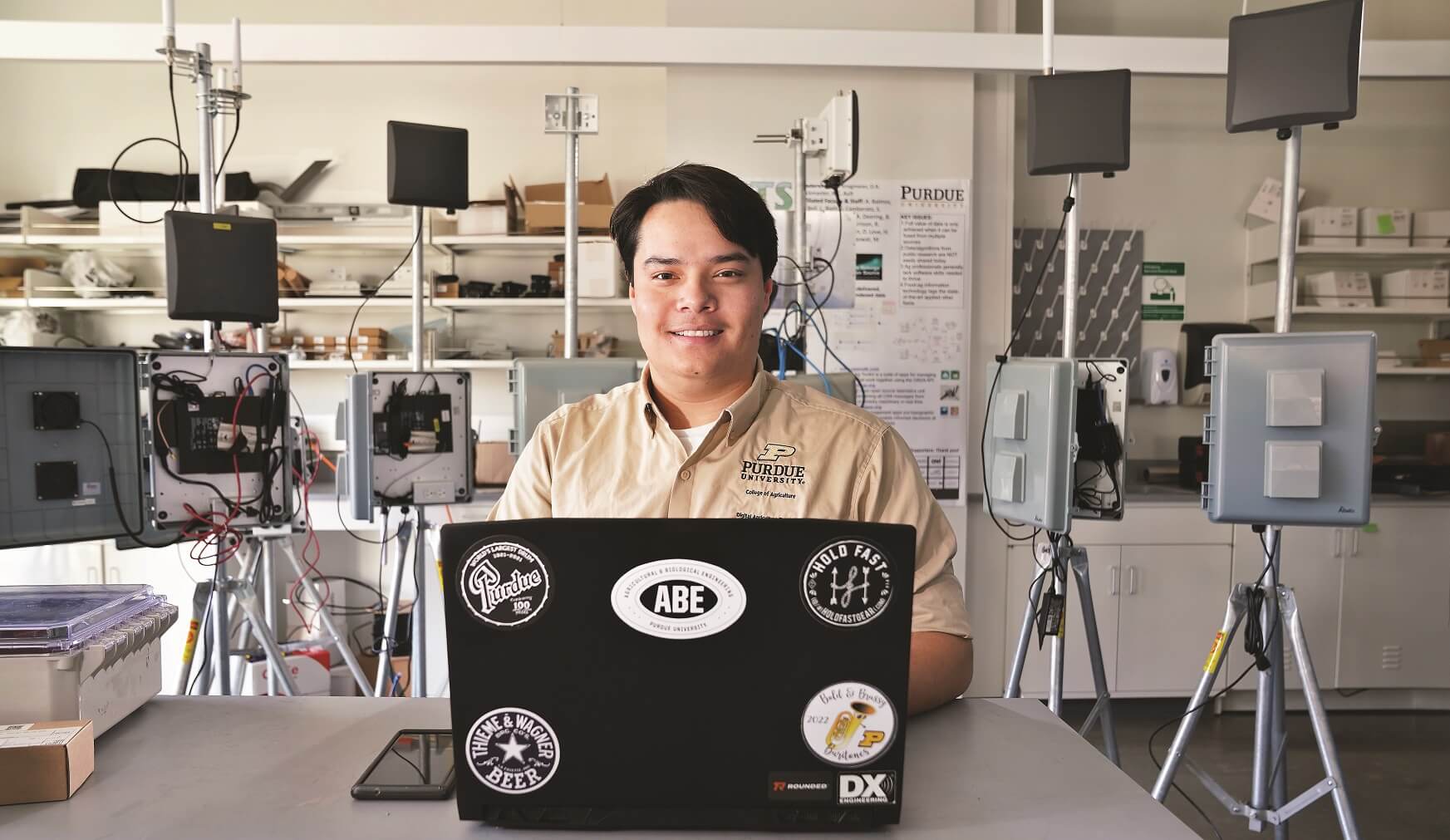
CONCLUSION
Purdue research experience is helping each of these students shape their next steps. Kirsten Senn graduated in spring 2021 and is currently in a master’s program in animal sciences at the University of Tennessee.
“I absolutely love where I’m at and what I’m doing,” she says. “Having done all the undergraduate research gave me a foot in the door and made me a little pickier because I knew what I liked and what I didn’t like.”
Cameron Matthews, whose work got him invited to the annual meeting of the National Association of Plant Breeders as a Borlaug Scholar, is applying to PhD programs in plant breeding and genetics. He’s mapped out a 50-year plan, which includes a career in industry followed by retirement into academia.
Kyle Soonthornsima, who graduated in December, is sending out resumes and hopes to have a career in digital precision agriculture. “Digital agriculture is the future,” he says.
Rachel Zheng is broadening her experience with new lab work in biomedical engineering and deciding whether she wants to go to graduate school. “I’ve been trying a little bit of everything,” she says.
As a sophomore, Keirstyn Amponsah isn’t sure what the future will bring, but she plans to keep her hand in research.
Olivia Bradford thinks she’ll get a job for a year or two and then go to graduate school. “Even if I’m not working in a lab, science will always be part of me and my career,” she says. “I’m so thankful to Dr. Ogas and to Purdue for all these opportunities.”

- Undergraduate research is one of the transformational experiences Purdue Agriculture recommends to help students prepare for life after college.
- Students can participate in research programs such as the Summer College of Agriculture Research Fellowship, join student research clubs like the International Genetically Engineered Machine team or approach faculty members individually.
- Research experience helps many students determine their educational or career goals.
- Other skills students gain are helpful at work but also in life: resilience in the face of frustration, mental flexibility, greater self-knowledge and more confidence approaching others.
Purdue Agriculture, 615 Mitch Daniels Blvd, West Lafayette, IN 47907-2053 USA, (765) 494-8392
© 2026 The Trustees of Purdue University | An Equal Access/Equal Opportunity University | USDA non-discrimination statement | Integrity Statement | Copyright Complaints | Maintained by Agricultural Communications
Trouble with this page? Disability-related accessibility issue? Please contact us at ag-web-team@purdue.edu so we can help.
